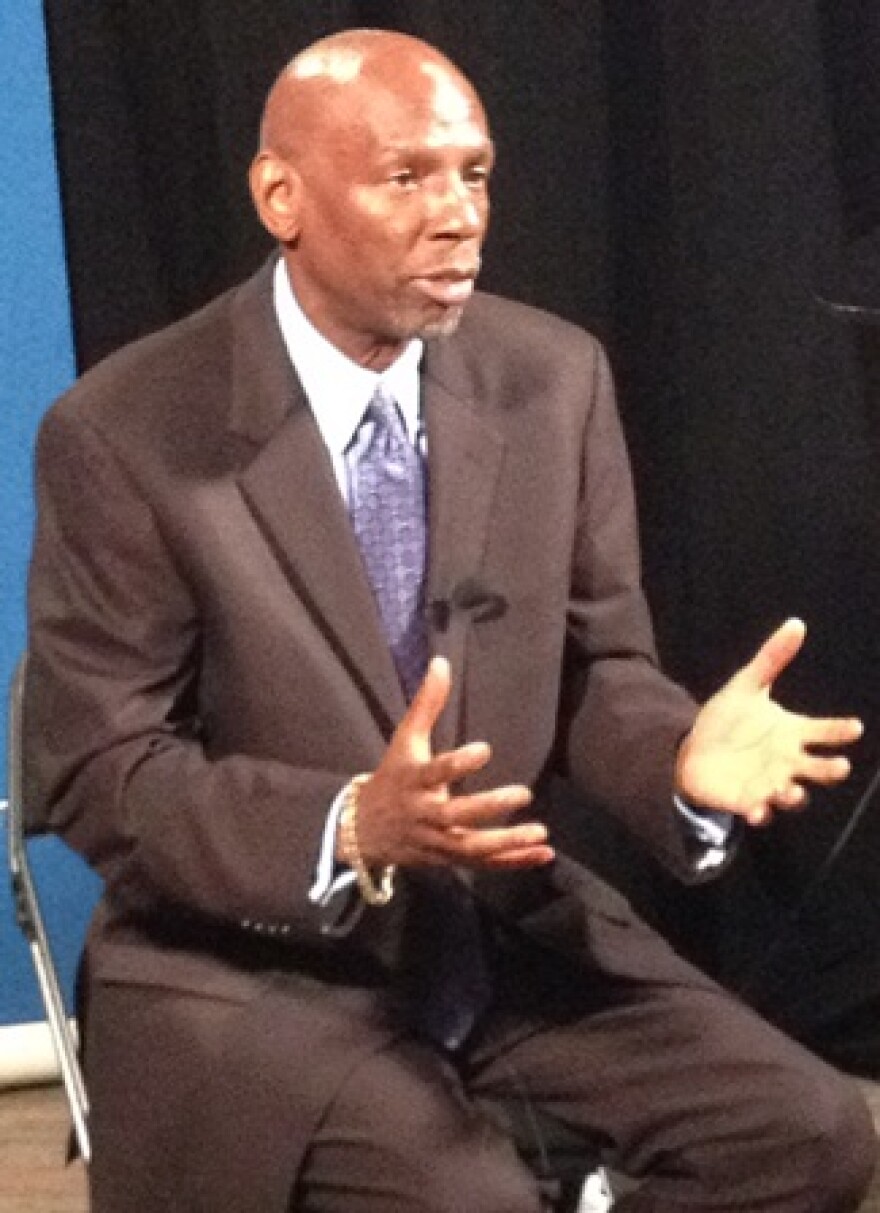What if we told you there was a man in Harlem who thinks he's figured out how to break the cycle of poverty?
You'd probably want to meet him, right? We sure did.
So when the State of Opportunity team went to a conference for the Children's Defense Fund, we grabbed a few minutes with Geoffrey Canada. Canada is the guy behind the Harlem Children's Zone, which President Obama has described as "an all-encompassing, all hands-on-deck, anti-poverty effort that is literally saving a generation of children.”
Not too shabby.
Before we get to our 5 questions for Geoffrey Canada, a little background:
The Harlem Children's Zone has been around for 13 years and covers about 100 blocks in central Harlem, and has become a model for other organizations around the country. Its leader Geoffrey Canada has become famous for his "whatever it takes" approach to helping kids.
Canada says part of what makes the Children's Zone unique is that it covers all kids, and it helps them from birth through college. Canada says it's "not about just creating a good school or saving some kids, but actually changing the culture so that a community that failure was the norm becomes a community where success is the norm."
1.) What would you say are the major pitfalls you've seen over the past 13 years?
"We believe that this is not about just creating a good school or saving some kids, but actually changing the culture so that a community that failure was the norm becomes a community where success is the norm."
The biggest obstacle we face is that people come up with excuses for why these children fail.
People look at the gangs and they look at the violence and they look at the single-parent households and they say 'well of course, what would you expect?'
And we say...regardless of those kinds of issues, which our kids do face and it does make the work harder, but we need a team of leaders who absolutely believe that despite all of that these kids will be successful, they will graduate high school, they will go to college and they will graduate college.
Finding the leaders and making sure the leaders stay engaged and energized is a real challenge for the communities.
2.) So how do you do that?
We've grown our own.
And I remind people that these efforts are not overnight quick fixes. This is really about changing a generation. So if you look at my directors (those who run our individual programs), about a third of them have actually grown up in the program, been participants, and now actually run the program.
So imagine a kid growing up under all the circumstances I talked about (gangs, violence, single-parent, substance abuse all around) and they were part of a program that helped them get out. There's no doubt in their mind that kids can make it from that environment because they were one of those kids.
3.) President Obama started the Promise Neighborhood Initiative, which is based a lot on the Harlem Children's Zone. Do you think your model is replicable?
It is replicable. It's not easy and it's not like every community is going to have the resources, the infrastructure and the leadership in place to do it. But the President said he was going to 20; there clearly are hundreds of places in America that are actually prepared to do this work, and there are dozens that are actually doing it.
4.) How much money does it take?
It costs us about $5,000 per child per year to do this work. [That doesn't involved school funding - that's separate.] This is for after school, evenings, weekends.
When people say 'oh well, we can't afford to do that,' I remind folks that in New York we spend about $45,000 a year to incarcerate a person. And when you look at where these incarcerated people come from, they come from the same neighborhoods that we're saving folk.
So we think this is a fairly inexpensive solution.
When you get that kid graduating from college, then you almost guarantee that their children are also going to go to college, and you really break the cycle of poverty. So we think it is more than a reasonable investment.
5.) There are a few Promise Neighborhoods in the works in Michigan, and they're taking more of a collaborative approach. You use more of an "I'm in charge, what I say goes" approach. Do you think a collaborative can work?
Yes [they] can work, let me be very clear about that. But they will not work if you can't hold someone accountable.
Every year there are probably about 12% - 15% of the folks who we work with who aren't able to do the job. And I have to make a decision - it's not a happy one - that I have to replace them with someone who can do the job.
In a collaborative where no one can make that decision ... this will not work. Because the work is hard, it calls for skilled people, it calls for real accountability and a use of data to drive results.
In the end, one person has to be able to say 'you didn't deliver and you have to go, and I have to replace you with someone who can deliver.' You give me that structure and that ups the likelihood that Promise Neighborhoods are going to work in a community.
For more background on the Geoffrey Canada's Harlem Children's Zone, check out this book by New York Times' reporter Paul Tough. Don't have time for a whole book? You can listen to a story about the Children's Zone on WBEZ's This American Life.



